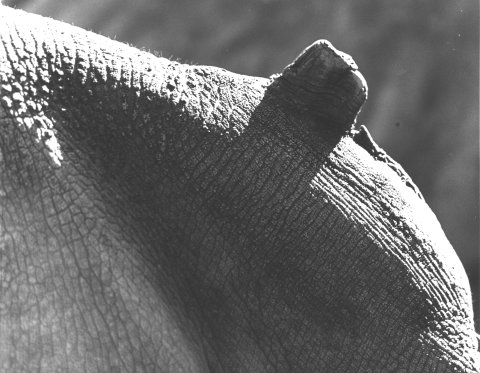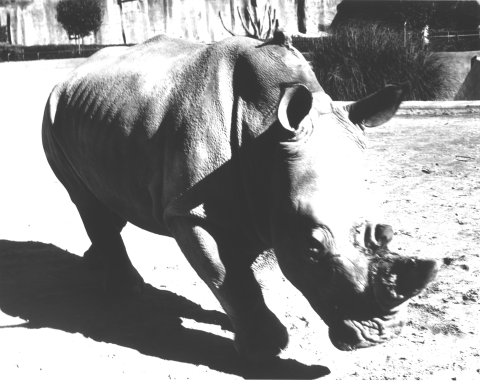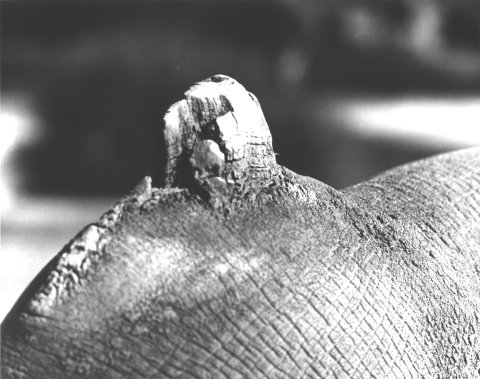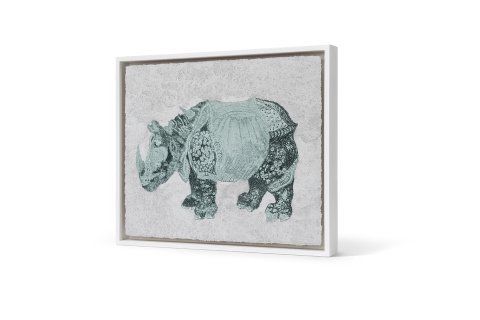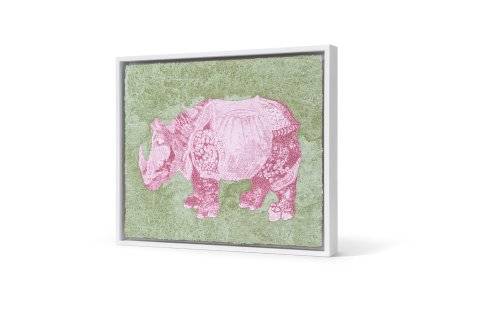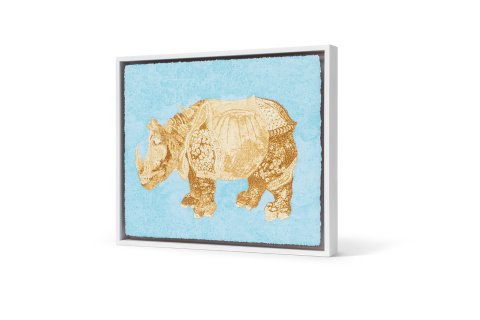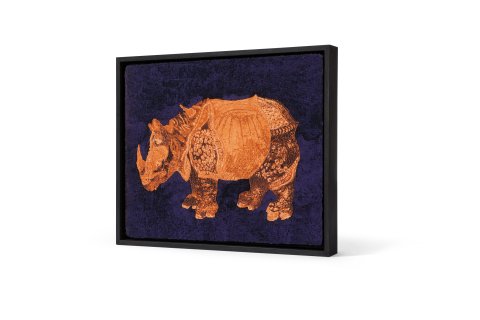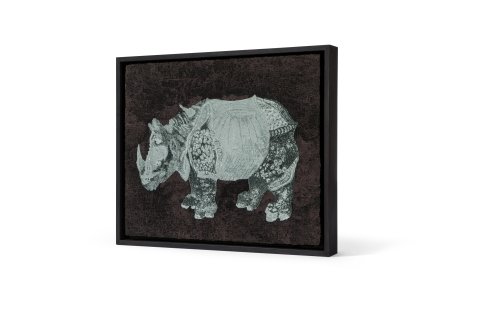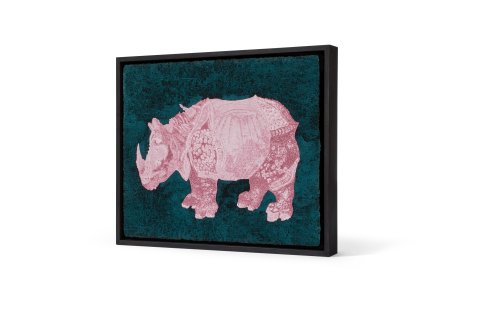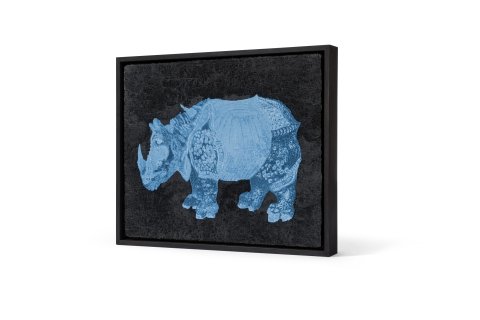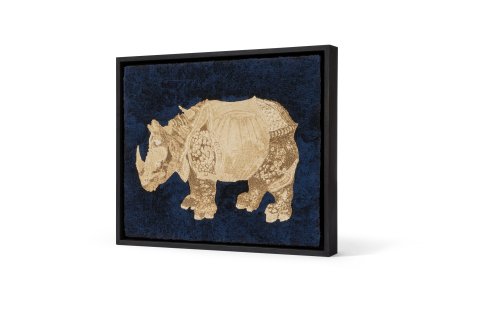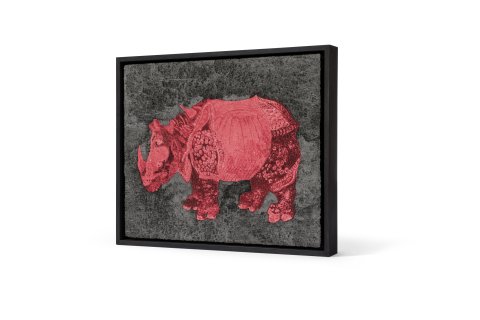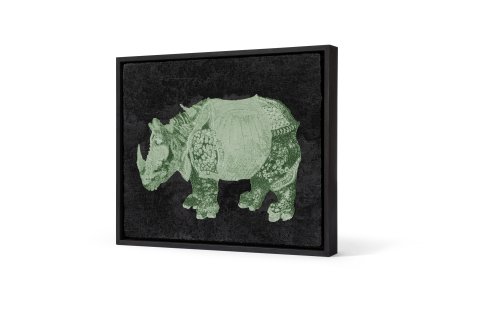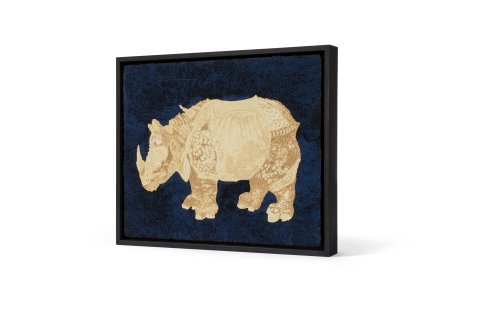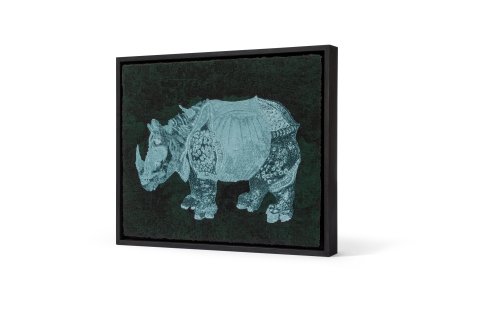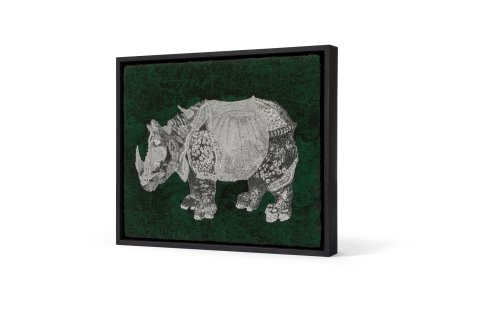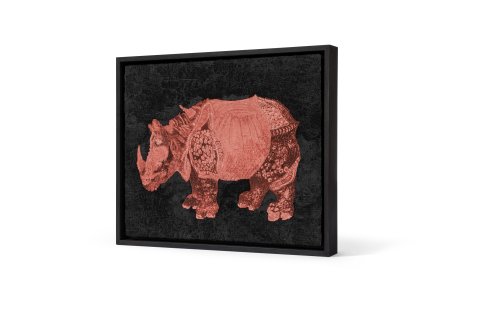A neck horn on a rhinoceros as Dürer imagined in 1515
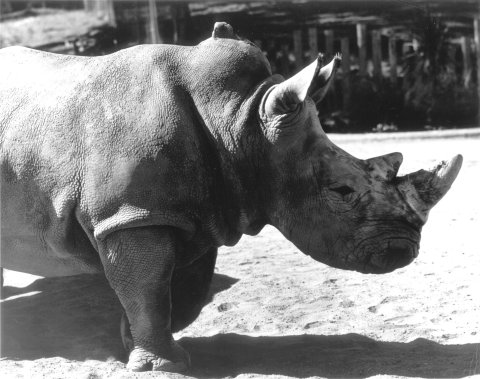
The oldest representation of the rhinoceros since Roman times
In May 1515, the General of the Portuguese Armada, Afonso de Albuquerque, brought a Rhinoceros to Lisbon. This rhinoceros was a gift from Sultan Muzafar of Cambay, to Emanuel I, King of Portugal.
The artist and author, Giovanni Giacomo Penni, made a woodcut of this Rhinoceros and chose it as the frontispiece of his manuscript "The Shape, the Nature and the Way of the Rhinoceros", published on July 13, 1515.
The frontispiece on this manuscript is the oldest representation of the rhinoceros since Roman times and depicts a woodcut of a one-horned Rhinoceros.

Did Dürer see a real Rhinoceros?
It is probable that Dürer, who never had seen a real Rhinoceros, based his idea of a Rhinoceros on Giovanni Giacomo Penni’s Rhinoceros as well as on a description in a letter from Valentin Fernandez who had seen the animal himself shortly after its arrival in Lisbon. A second letter from Lisbon, written by an unknown sender, arrived around the same time in Nürnberg and also included a sketch of the Rhinoceros.
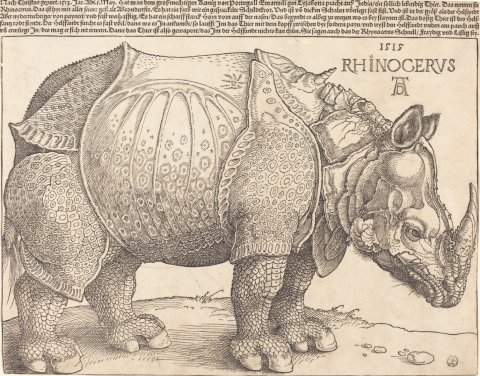
Dürer's imagined Rhinoceros
Dürer’s imagined Rhinoceros, in his woodcut, has an extra horn on the neck as well as a skin of thick plates covered in a pattern of circular marks that resemble a suit of armor, and with legs covered with scales, almost like that of a reptile. Dürer’s imagined details on the animal are that of Dürer’s artistic freedom.
However, those details are not that fictional since the armour-like pattern of the skin look in fact quite similar to the real skin of an Indian rhinoceros, and an extra horn can appear on a rhinoceros.
Popularity of Dürer's Rhinoceros
Dürer's The Rhinoceros woodblock was put through eight editions, seven of which were posthumous.
The Rhinoceros served as the model for illustrations of the species as late as the end of the 18th century.
Very few prints have survived and impressions from the first edition are very rare.
Dedichen's Rhinoceros after Dürer with a Pop Art twist
Dedichen's Rhinos are based on Dürer's woodcut print and are first painted with tempera on gold leafs.
A lot of experimentation is behind the achievement of the intense colour luminance and the craquelure that resembles the beautiful skin of the rhino.
Neither intaglio, lithography, woodcut, screen printing etc enabled a transfer of the colour luminance of the pigments from the painting to the paper.
Hence, the resort to pigment printing.
Pigment printing is a technique where the image is printed by the use of pigments only, and the colour intensity and luminance of the pigments in the painting is kept when transferred to paper.
Dedichen combines Dürer's The Rhinoceros with Warhol's philosophy, which was to catch images we all recognise and add pop art colours to them.



